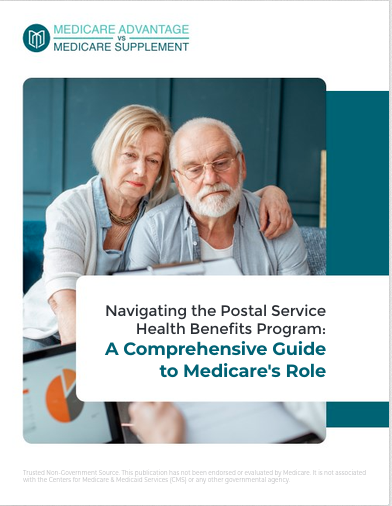Key Takeaways
-
Original Medicare and Medicare Advantage have distinct differences in coverage, costs, and flexibility, which can impact your healthcare experience.
-
Understanding the pros and cons of each option helps you choose the one that aligns with your medical needs and financial situation.
Understanding Original Medicare: The Basics
Original Medicare is the traditional federal health insurance program that has been a cornerstone of healthcare for decades. It consists of two parts:
-
Part A (Hospital Insurance): Covers inpatient hospital care, skilled nursing facility care, hospice, and limited home health services. Most people don’t pay a premium for Part A if they have worked and paid Medicare taxes for at least 10 years.
-
Part B (Medical Insurance): Covers outpatient services such as doctor visits, preventive care, lab tests, and durable medical equipment. Part B requires a monthly premium, with costs adjusted based on your income.
Original Medicare is widely accepted by providers across the U.S. However, it does not include prescription drug coverage (Part D) or additional benefits like dental, vision, or hearing. To cover these gaps, beneficiaries often purchase stand-alone Part D plans and supplemental insurance like Medigap.
What is Medicare Advantage?
Medicare Advantage, also known as Part C, is an alternative to Original Medicare. These plans are offered by private insurance companies approved by Medicare. They combine Part A, Part B, and often Part D into one plan. Many Medicare Advantage plans also include extra benefits, such as fitness programs, transportation, and dental, vision, and hearing coverage.
Unlike Original Medicare, Medicare Advantage plans require you to use a network of healthcare providers and facilities. Costs can vary significantly based on the plan’s structure and your healthcare usage.
Comparing Coverage: Original Medicare vs. Medicare Advantage
Flexibility in Provider Access
-
Original Medicare: Offers nationwide coverage, allowing you to see any doctor or specialist who accepts Medicare. This is especially beneficial if you travel frequently or live in different locations throughout the year.
-
Medicare Advantage: Typically restricts you to a network of providers. You may need to select a primary care physician (PCP) and get referrals to see specialists, depending on the plan.
Prescription Drug Coverage
-
Original Medicare: Prescription drugs are not covered under Part A or Part B. You need to enroll in a separate Part D plan to get this coverage.
-
Medicare Advantage: Most plans include prescription drug coverage, simplifying your healthcare under a single plan. However, formularies (lists of covered drugs) and costs can vary.
Additional Benefits
-
Original Medicare: Does not include coverage for routine dental, vision, or hearing services. These must be purchased separately through supplemental plans or paid for out of pocket.
-
Medicare Advantage: Often provides extra benefits like dental, vision, hearing, and wellness programs, making it a more comprehensive option for some.
Cost Considerations
Premiums and Out-of-Pocket Costs
-
Original Medicare: You’ll pay a monthly premium for Part B, and possibly for Part A if you don’t meet the work requirements. Out-of-pocket costs include deductibles, coinsurance, and copayments. While there’s no limit on out-of-pocket spending, Medigap policies can help cover these costs.
-
Medicare Advantage: Plans may have lower monthly premiums, but you could face higher out-of-pocket costs depending on your healthcare usage. Medicare Advantage plans have an annual out-of-pocket maximum, which limits the amount you’ll pay in a year for covered services.
Medigap: Supplemental Coverage for Original Medicare
-
Original Medicare allows you to purchase a Medigap policy to cover costs like deductibles and coinsurance. However, Medicare Advantage plans do not permit Medigap coverage, meaning you’ll need to budget carefully for potential out-of-pocket expenses.
How Referrals and Authorizations Impact Your Care
Original Medicare
Referrals are not required to see specialists, giving you more control over your healthcare decisions. You can see any Medicare-accepting provider without prior authorization.
Medicare Advantage
Most plans operate within a network and may require referrals to see specialists. Additionally, you might need prior authorization for certain procedures or treatments. This added layer of management can delay care in some cases.
Travel and Coverage: What You Need to Know
Original Medicare
Coverage extends nationwide, making it ideal for snowbirds, frequent travelers, or anyone living in multiple states. Emergency care is covered anywhere in the U.S.
Medicare Advantage
Coverage is typically limited to your plan’s service area. While emergency and urgent care are covered nationwide, routine care may not be. Some plans offer enhanced benefits for travel, but this is not universal.
Enrollment and Plan Changes
Original Medicare
You’re automatically enrolled in Original Medicare when you turn 65 if you’re already receiving Social Security benefits. You can switch to a Medicare Advantage plan during specific enrollment periods, such as the Annual Enrollment Period (October 15 to December 7).
Medicare Advantage
Enrollment requires actively choosing a plan. You can switch plans or return to Original Medicare during certain times of the year, including:
-
Medicare Advantage Open Enrollment Period: January 1 to March 31.
-
Annual Enrollment Period: October 15 to December 7.
Special Enrollment Periods may apply if you experience a qualifying life event, such as moving or losing other coverage.
Choosing the Right Option for You
Deciding between Original Medicare and Medicare Advantage requires weighing your healthcare needs, financial situation, and personal preferences. Here are some questions to consider:
-
Do you need access to a broad network of providers, or are you comfortable with a narrower network?
-
How important are extra benefits like dental and vision coverage?
-
Are you willing to manage multiple plans (Original Medicare, Part D, and Medigap), or do you prefer an all-in-one solution?
-
Do you travel frequently or live in different states during the year?
Answering these questions can help you determine which option aligns better with your lifestyle.
A Balanced Perspective on the Pros and Cons
Original Medicare: Pros and Cons
-
Pros: Nationwide provider access, no network restrictions, no need for referrals.
-
Cons: No out-of-pocket spending limit, no additional benefits, and requires separate Part D and Medigap plans for comprehensive coverage.
Medicare Advantage: Pros and Cons
-
Pros: All-in-one coverage, includes additional benefits, and has an annual out-of-pocket spending cap.
-
Cons: Limited provider networks, potential need for referrals and authorizations, and costs vary based on healthcare usage.
Staying Informed About Medicare Changes
Medicare is not static. Costs, coverage options, and plan benefits can change annually. Make it a habit to review your plan’s Annual Notice of Change (ANOC) to stay updated. This ensures your plan continues to meet your needs and budget.
Making Your Decision: A Final Thought
Choosing between Original Medicare and Medicare Advantage is a highly personal decision. Both options have unique advantages and limitations. By understanding how they differ, you can make an informed choice that ensures you receive the healthcare coverage you need.










